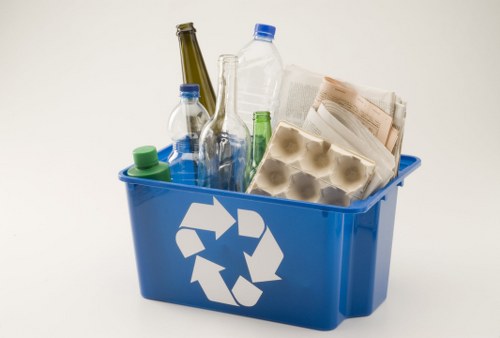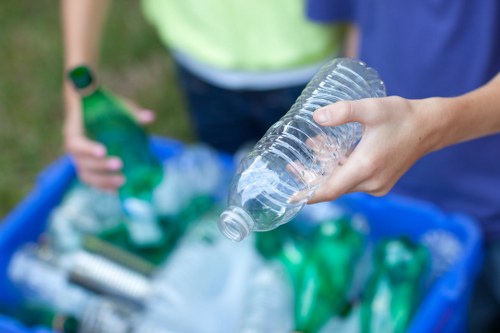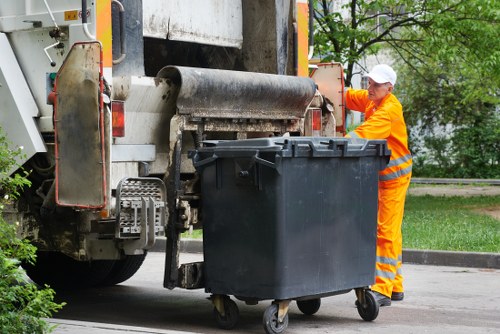Garden Clearance in Rubbish Clearances: Transform Your Outdoor Space
Introduction

Garden clearance is an essential part of maintaining a neat, healthy, and welcoming outdoor environment. Whether you're looking to remove fallen leaves, unwanted debris, or bulky rubbish items, an effective garden clearance service can revitalize your outdoor space. This article explores the many facets of garden clearance in the context of rubbish clearances, offering insights into benefits, techniques, planning, and eco-friendly disposal methods.
Proper garden clearance is more than just a seasonal chore—it can significantly enhance your property's value while ensuring a safe environment for family and pets. Regular clean-ups prevent potential hazards and maintain the natural beauty of your yard. In a time when environmental concerns are paramount, responsible clearance is a priority.
In the following sections, we delve deep into useful strategies and innovative approaches for garden clearance, discuss challenges, and highlight practical tips that can be implemented by homeowners or professional services. By using effective rubbish removal methods, you can achieve an attractive, clutter-free garden that invites relaxation and enjoyment.
The Importance of Garden Clearance

An ordered garden not only boosts the curb appeal of your home but also contributes to a healthy ecosystem. Garden clearance in rubbish clearances involves systematic removal of waste materials, ensuring that hazardous items and excess debris do not compromise the integrity of your outdoor space. The process is essential for the prevention of pest infestations and the enhancement of soil quality.
Many homeowners underestimate the long-term benefits of professional garden clearance. Routine maintenance, including the clearance of overgrown vegetation and accumulated lixo, can deter unwanted insects and reduce the risk of fire hazards. Additionally, clear gardens are more inviting and allow for improved utilization of outdoor areas for leisure and social gatherings.
Beyond aesthetics, proper garden clearance supports local recycling programs and promotes environmental stewardship. When rubbish clearances are handled with care, materials such as wood, metal, and plastics can be sorted for recycling, contributing to sustainable practices and the conservation of natural resources.
Planning and Techniques for Effective Garden Clearance

Planning a garden clearance initiative can seem daunting, but breaking it down into manageable tasks is the key to success. Start by surveying your property to identify areas that require immediate clearance and create a list of tasks sorted by priority. Incorporating professional advice early in the planning process can be invaluable in ensuring efficiency and safety during clearance activities.
Utilize an organized approach by creating an itemized list of the materials to be removed. Effective planning may include the following steps:
- Assess the entire garden area and note problematic zones.
- Document different types of rubbish requiring special disposal methods.
- Determine any obstacles such as fences, water features, or heavy structures.
Moreover, the choice of equipment is crucial. From manual tools like rakes and shovels to mechanical resources like mini-excavators or wheelbarrows, having the right tools can speed up the process and reduce physical strain. A blend of eco-friendly techniques and effective rubbish clearances ensures that the garden is not only free from clutter but also nurtures both flora and fauna, creating a balanced ecosystem.
Eco-Friendly Disposal and Essential Tips

Embracing environmentally responsible practices is critical during garden clearance. One must consider the fate of all waste materials. Recyclable items such as wood, metal, and plastic should be segregated and sent to recycling centers. Organic matter like leaves, grass clippings, and branches can often be composted, contributing to the health of your garden's soil.
Here are some eco-friendly tips for successful garden clearance:
- Separate recyclable and compostable waste from non-recyclables.
- Consider partnering with local recycling initiatives that focus on green practices.
- Minimize the use of non-biodegradable packaging during removal and disposal.
Developing a routine garden clearance plan can keep your outdoor space consistently pristine. Regular scheduling of minor clearance tasks can prevent debris from accumulating and help monitor any potential issues early on. Whether you opt for a DIY approach or hire a professional service, clarity in planning and adherence to eco-friendly principles lays the foundation for a thriving, balanced outdoor space.
Choosing Professional Services and Final Thoughts

In some cases, a professional clearance service may be the most efficient solution to handle extensive garden clearance projects. These experts offer a range of services from simple rubbish removal to complex debris management systems. By partnering with a qualified team, you benefit from their experience in managing hazardous materials and optimizing the clearance process efficiently.
When selecting a garden clearance service, consider factors such as reputation, service range, and sustainability practices. Ask questions about their waste disposal methods, recycling policies, and whether they provide a detailed plan before starting the work. A professional outlook ensures that your garden is treated with care and respect, preventing future problems and promoting long-term outdoor beauty.
As modern lifestyles become more demanding, investing time and resources in maintaining a clean and organized outdoor space is more crucial than ever. Whether you decide to conduct the clearance yourself or enlist professional help, remember that a well-maintained garden is a direct investment in your home's value and your personal well-being. Book your service now to take the first step towards a clutter-free garden, and contact us today for personalized advice on the best practices for garden clearance in rubbish clearances.
Deep Dive: Methods and Best Practices for Garden Clearance
Effective garden clearance methods require a thoughtful consideration of the waste types as well as the techniques used for removal. In urban and suburban areas alike, the use of modern machinery alongside traditional tools has redefined the approach to rubbish clearances. The primary goal is to reduce waste sustainably and reap the environmental benefits that accompany such practices.
Integrated systems that combine manual labor with the assistance of mechanical devices are particularly useful in managing large properties. This twin approach allows homeowners to address both delicate green spaces and heavy-duty areas effectively. Utilizing a step-by-step methodology ensures that all elements are thoroughly cleared without causing significant disturbances to the natural layout of the garden.
Here are some best practices in a concise list to consider before starting your garden clearance project:
- Evaluate the area to document items that can be reseeded or replanted.
- Plan a sequential process: first remove bulky items, then trim and bag organic waste.
- Ensure that sharp, potentially dangerous items are handled with extreme care.
Utilizing Sustainable Tools and Techniques

The choice of tools used in garden clearance can influence both the efficiency of removal and environmental impact. Sustainable tools such as energy-efficient power equipment or manual hand tools are preferable for small-scale tasks. Tools designed to reduce carbon footprints and minimize waste are now more accessible than ever, making it easier for homeowners to adopt green practices.
Innovation in equipment has led to the emergence of eco-friendly practices within the field of rubbish clearances. For instance, electric-powered machines now offer an alternative to traditional petrol-powered options. These modern solutions provide significant advantages, including lower noise levels and reduced exhaust emissions, contributing to a healthier environment in your neighborhood.
In addition to mechanical tools, techniques such as selective removal and targeted clearance are essential. By assessing which components of your garden need extra care, you can direct resources more effectively and reduce time-consuming errors. The integration of technology—like apps for scheduling and tracking clearance tasks—has also added a layer of precision to the entire process.
The Role of Community in Garden Clearance

The benefits of proper garden clearance ripple outwards into the community. A clean, well-maintained outdoor space uplifts the local atmosphere and encourages neighborly cooperation. In many communities, coordinated clearance events and green initiatives have become a celebrated part of local culture. These events foster connections among residents and reinforce the importance of collective environmental responsibility.
Organizing community-based clearance projects can yield long-term benefits, generating a sense of collective achievement. This approach not only boosts regional aesthetics but often drives increased support for local environmental policies. Through shared effort, neighborhoods drastically reduce the negative impacts associated with unmanaged rubbish and create safer, healthier environments.
Consider forming a local committee or collaborating with community leaders who are passionate about green initiatives. By developing a scheduled calendar for clearance activities, such groups can take proactive measures to ensure that all public and private green spaces remain vibrant and clean. Contact us today if you are interested in community partnerships to promote sustainable garden clearance practices.
DIY vs. Professional Service: A Comparative Overview

Choosing between a DIY approach and hiring a professional service for garden clearance requires careful consideration. The DIY route might appeal to those who enjoy a hands-on approach and wish to invest personal time into maintaining their gardens. However, DIY may not always be the most efficient or safe method, especially when dealing with hazardous materials or large-scale rubbish clearances.
When opting for professional assistance, you benefit not only from expert knowledge but also from access to specialized equipment and manpower. Professionals are trained to handle even the most challenging clearance tasks, ensuring minimal disruption to your regular routine. Their expertise in sorting, recycling, and disposing of different types of garden waste saves time and lessens environmental impact.
An ordered list of factors to help decide between DIY and professional services may include:
- Budget considerations and time constraints.
- The anticipated volume of debris and waste.
- Safety risks involved, especially with sharp or toxic materials.
- The availability of proper equipment and skilled labor.
Final Thoughts and Next Steps

Garden clearance in rubbish clearances is a dynamic process that marries aesthetics, environmental care, and practical planning. The steps outlined in this article aim to provide you with a roadmap to achieve a clutter-free outdoor space that not only looks appealing but also supports the planet’s health. With strategies tailored to entice both eco-conscious homeowners and busy professionals, the art of garden clearance stands as an investment in the future.
Embrace the journey of transforming your garden—a space that holds memories, potential for new growth, and endless recreational opportunities. Whether you invest in modern equipment, rely on traditional methods, or choose professional services, the key is consistency and care. By keeping your garden free of unnecessary rubbish and debris, you ensure that every season brings new possibilities and renewed beauty to your outdoor haven.
Interested in exploring more about efficient garden clearance methods? Book your service now and join the growing number of homeowners who prioritize both home aesthetics and environmental sustainability. Take the first step toward a refreshing outdoor makeover and transform your space into a refined sanctuary that truly reflects your commitment to a cleaner, greener future.
Additional Resources
For further reading on eco-friendly practices and innovative rubbish removal techniques, consider exploring local government resources, online forums, and trusted environmental blogs. Each source offers valuable insights that can help you refine your approach to garden clearance even further.
Get Informed, Get Inspired
Staying updated with the latest trends in sustainable living is key. Embrace new techniques and remain curious about emerging tools that can make your garden clearance projects more effective and eco-friendly.